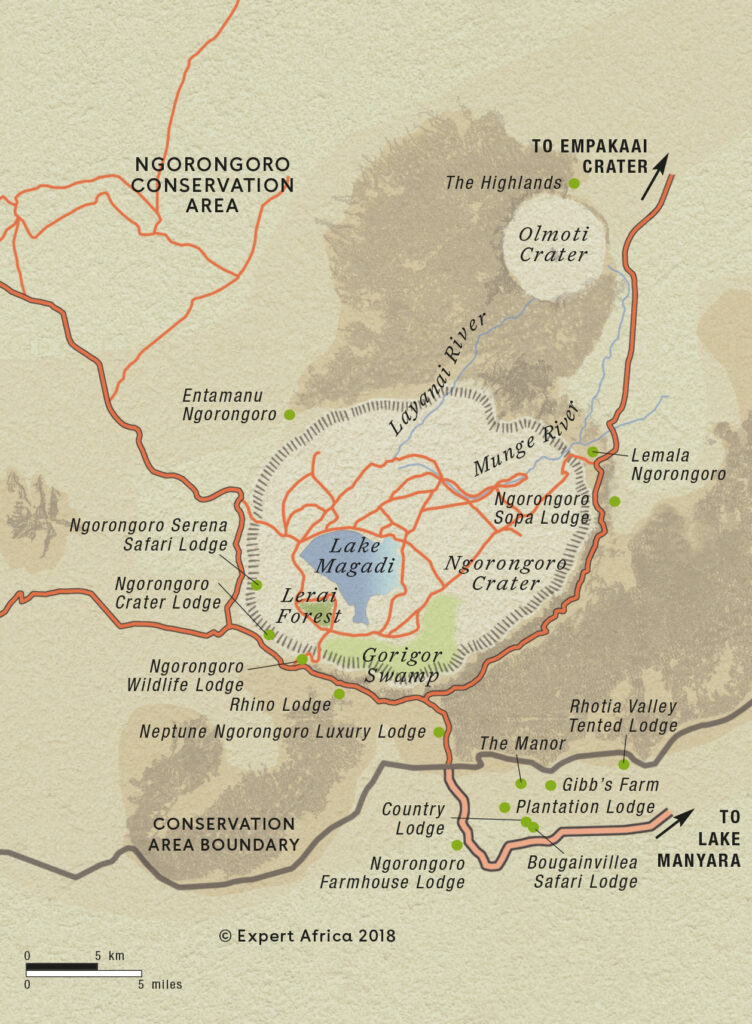

The Ngorongoro crater is located west of Arusha, connecting the Serengeti in the north-west to the Great Rift Valley in the east. The park was established as a conservation area for wildlife and the semi-nomadic Maasai population that reside in it.
The caldera (Volcanic crater) is an important landmark for human history, as well as an essential habitat safeguarding animal diversity. Despite its small area, the caldera has excellent bio-diversity, and several globally threatened species live on these plains. These plains form part of the route of the Great Migration.

Variations in climate, landforms, and altitude produce a range of habitats that can support a variety of wildlife, and has led to a network of overlapping ecosystems.The crater basin is covered with fresh water and alkaline lakes, marshes and swamps. These alkaline lakes attract flamingos, which number in their thousands during the wet season.The crater is home to some 30,000 animals, some of which migrate here during the Great Migration, and others that stay here year-round.
The rich, volcanic, fertile soil of the crater hosts plenty of wildlife in the dry season, including warthog, impala, and buffalo. These prey in turn attract predators, including lions, hyena, cheetah, leopard, wild hunting dog and golden cat. Honey badgers, jackals, foxes, and ostrich can be found here year-round. A high population of cheetahs and lions can be found in the Lake Ndutu region west of the crater.The crater is also home to over 500 species of bird, including the Rüppell’s Griffon vulture.The rarest animals found here are the black male lion and the black rhino. Interestingly, there are no giraffes in the crater; it is thought that they cannot get up the steep sides.

The best time to visit the Ngorongoro Conservation area is from June to February if you are coming for the Great Migration. Wildlife lives at the crater year-round, which means you can visit at any time of year and still get great game viewing. March and April see the worst of the rains, so the crater is less busy during these months. One benefit of visiting during the wet season is that the landscapes are beautiful, but wildlife viewing is not as good. The peak season is July to September, and this corresponds with the best wildlife viewing.
If you are keener on seeing the predators in action, go in January or February when there is a hiatus in the annual rains and the wildebeest calve. Due to a large number of vehicles during the high season, some prefer to travel to the crater in the low season. This is still a pleasant experience because the water levels in Lake Magadi (in the centre of the crater) results in higher concentrations of flamingos. Plus, most of the predators stay in the basin year round – there are still plenty of animals for them to hunt. The only thing you will miss is the Great Migration, and of course you should be prepared to a some rains if travelling in the quieter months!
WhatsApp us